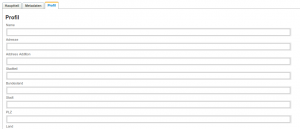Silverstripe Tip of the week:
Sometimes you have to remove a customScript of a module, because you want to script it differently.
If the module author was so wise to give his customScript a ID (UserFormsValidation in this case) like they did in UserForms:
Requirements::customScript(<<<JS
(function($) {...})(jQuery);
JS
, 'UserFormsValidation');
then you can do the following in the init function of your subclass controller:
Requirements::block('UserFormsValidation');
Easy, isnt it?
